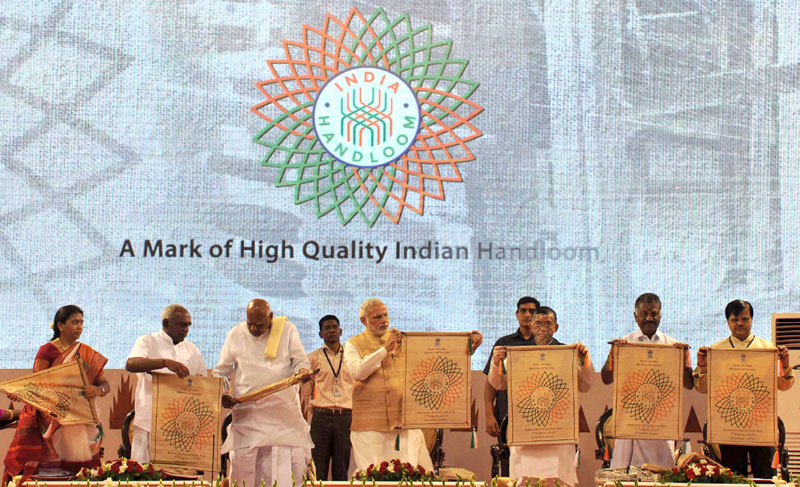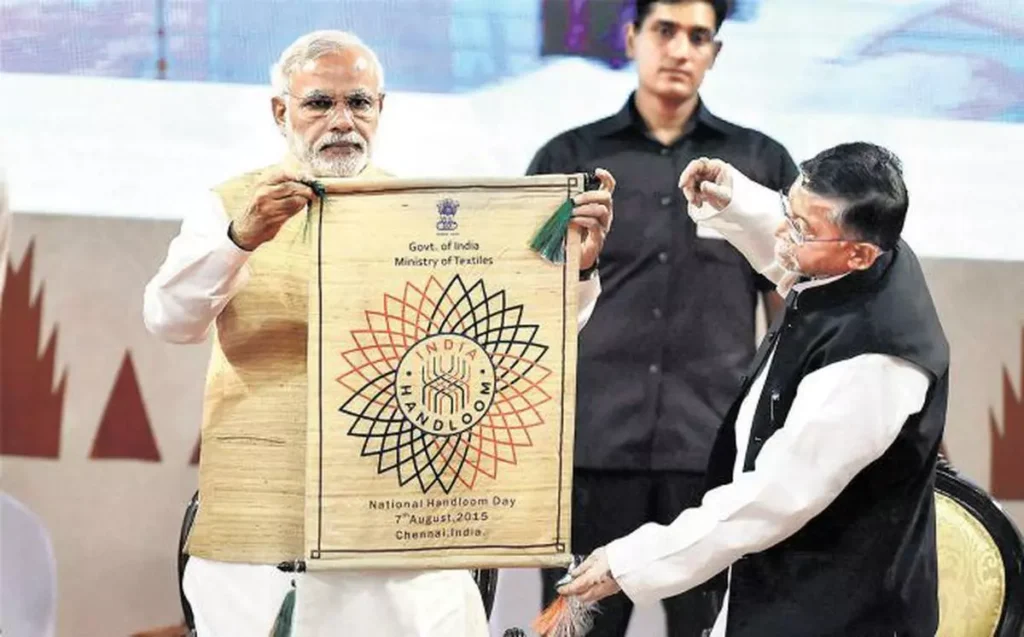Every year on August 7th, India celebrates National Handloom Day to honor the rich cultural heritage and artisanal skills of handloom weavers across the country. This day was established in 2015 by the Government of India to commemorate the Swadeshi Movement, which was launched on the same day in 1905 to protest against the partition of Bengal and promote the use of hand-woven textiles.
Handlooms have always been an integral part of Indian culture, dating back centuries to ancient times. The exquisite craftsmanship, vibrant colors, and intricate designs of handloom fabrics have fascinated people from all walks of life. From the royal courts to everyday wear, handlooms have adorned people with grace and elegance.
National Handloom Day is an opportunity to appreciate the efforts of weavers who painstakingly create these beautiful textiles. It is also a reminder to promote and support the handloom industry, which plays a crucial role in preserving traditional techniques and empowering rural communities.

You can read our another post on Twin Temple of Gandharadi: A Marvel of Ancient Architecture
The celebration of National Handloom Day revolves around showcasing the diversity and beauty of handloom weaves across India. Various events and exhibitions are organized to exhibit the richness and craftsmanship of handloom textiles. Handloom clusters, cooperatives, and societies are encouraged to participate by showcasing their collections.
Many prominent figures in the fashion and textile industry lend their support by promoting handloom fabrics and designs. Designers collaborate with weavers to create unique and contemporary collections that blend traditional art with modern aesthetics. This collaboration not only provides a platform for weavers to showcase their skills but also helps to revive the struggling handloom industry.
The Government of India has also taken several initiatives to promote handloom weaves and support weavers. Schemes like the National Handloom Development Program (NHDP) aim to provide financial support, design inputs, and market access to weavers. Handloom fairs and exhibitions are organized to create awareness and facilitate the marketing of handloom products.

The significance of handlooms extends beyond their artistic value. Handloom production also contributes significantly to the rural economy, providing employment to a large population. By investing in handloom products, we contribute to the sustainability of this age-old craft and support the livelihoods of weavers who continue to face challenges due to mechanized productions and competition from cheaper, mass-produced textiles.
On National Handloom Day, let us take a moment to appreciate the stories woven into each handloom fabric. Let us pledge to support and preserve this heritage craft, recognizing the efforts of the weavers who enrich our lives with their artistry. By choosing to wear handloom textiles, we not only contribute to the conservation of our cultural legacy but also commemorate the spirit of the Swadeshi Movement.
As we celebrate National Handloom Day, let us cherish the intricate weaves, the vibrant colors, and the timeless art of handlooms that are an irreplaceable part of our identity as Indians. Let us celebrate the craftsmen who continue to preserve this legacy and ensure that handlooms continue to thrive for generations to come.
Write A FAQ For National Handloom Day – Celebrating the Heritage of Indian Handlooms
1. What is National Handloom Day?
National Handloom Day is observed on 7th August every year in India to celebrate the rich heritage and craft of handloom weaving. It aims to promote and recognize the contribution of handloom weavers in preserving traditional art forms.
2. Why is National Handloom Day celebrated?
National Handloom Day was established by the Government of India in 2015 to commemorate the Swadeshi Movement launched in 1905. The Swadeshi Movement emphasized the use of Indian-made products, including handloom textiles, to promote self-reliance and support local craftsmanship.
3. How is National Handloom Day celebrated?
On National Handloom Day, various events and programs are organized across the country to showcase the diversity and beauty of handloom textiles. This includes exhibitions, fashion shows, seminars, workshops, and cultural performances that highlight the significance of handloom weaving.
4. What are the objectives of National Handloom Day?
The primary objectives of National Handloom Day are to generate awareness about the importance of handloom weaving, promote the use of handloom textiles, support handloom weavers and their communities, and preserve traditional art forms and techniques.
5. How can individuals celebrate National Handloom Day?
Individuals can celebrate National Handloom Day by wearing handloom textiles and encouraging others to do the same. They can also visit local handloom exhibitions, purchase handloom products, and spread awareness about the significance of supporting handloom weavers and their craft.
